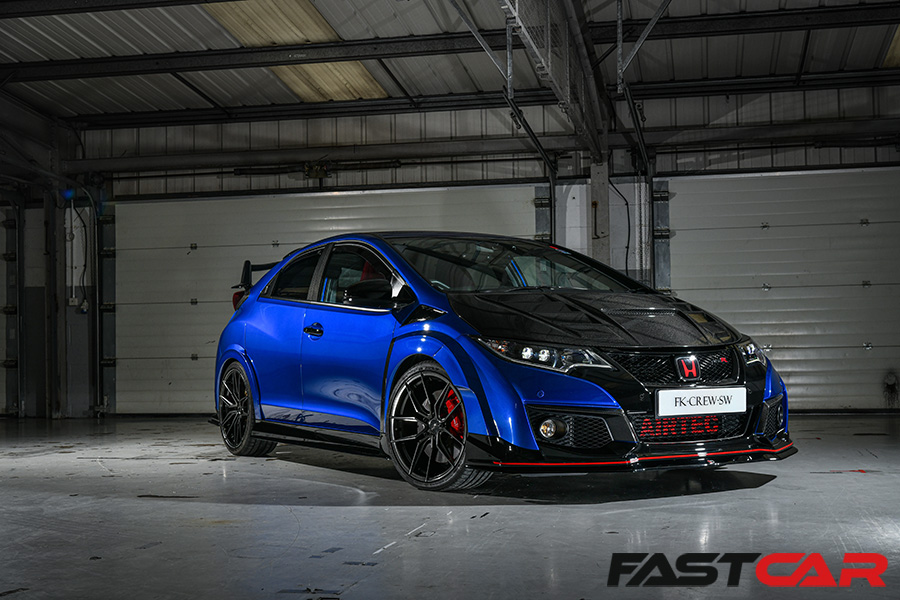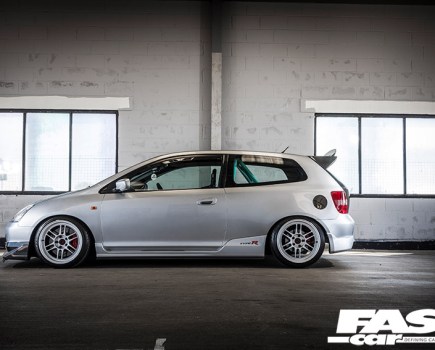While the FK2 moved the Civic Type R away from its naturally-aspirated roots, it didn’t leave behind the abundance of modifying options available for the hot Honda. Here’s our guide to FK2 Honda Civic Type R tuning.
When the FN2 Type R halted production in 2011 – the naturally-aspirated K20 engine finally failing to meet the stricter Euro emissions regulations – Honda fans were lacking a hot Civic model they could buy fresh off the forecourt.
However, after a few years under the radar, with the Type R brand relying on the many thousands of loyal EP3 and FN2 owners to keep the fire burning, rumors began circling that Honda was working on a new Civic Type R, one based on the new FK2 platform, that would take the brand to a whole new level…
Type R fans had to wait until 2015 to get their fix of a new hot Civic, but when the FK2 Type R was finally released, it raised the bar to even greater heights than expected. Check out our FK2 review to see what we thought of it in person.
Honda Civic Type R FK2 Specs
Packing a turbocharged VTEC engine with a whopping 306bhp, with over twice the torque of the previous FN2, it was a missile. However, to maintain the model’s hardcore character, Honda engineered the new K20C1 engine to still be able to rev high and work seamlessly with both the legendary VTEC system and the slick manual gearbox, traits Type Rs have always been known for.
A limited-slip differential, advanced traction control systems and electronically switchable dampers ensured that the car didn’t waste any of its engine power. What’s more, you could even ramp things up further by pressing the +R button, which sharpens throttle response, stiffens the dampers and gives the steering a weightier feel.
It was the most visually extreme Type R to date too, with numerous aerodynamic add-ons from splitters and spoilers to vents and diffusers, all combining to help it stick to the ground and aid stability at high speed.
Extracting The Potential Of Boost
This new breed of Type R opened the doors to a whole new way of Honda Civic Type R tuning, with boost becoming less of a dirty word in Honda circles and soon becoming the Civic’s new best friend, with the following FK8 and new FL5 generations also getting a turbocharged engine.
To guide you through this new territory of turbo’d Type Rs, we’ve broken the car into its component parts to give you specific advice on how to maximize each area in a neat Honda Civic Type R tuning guide
We’ll show you which parts you’ll want to upgrade – as well as which ones work fine from the factory – to let you know the essential areas to spend your cash to make this extremely capable car even more monstrous.
Tempted? check out our FK2 Type R buyer’s guide.
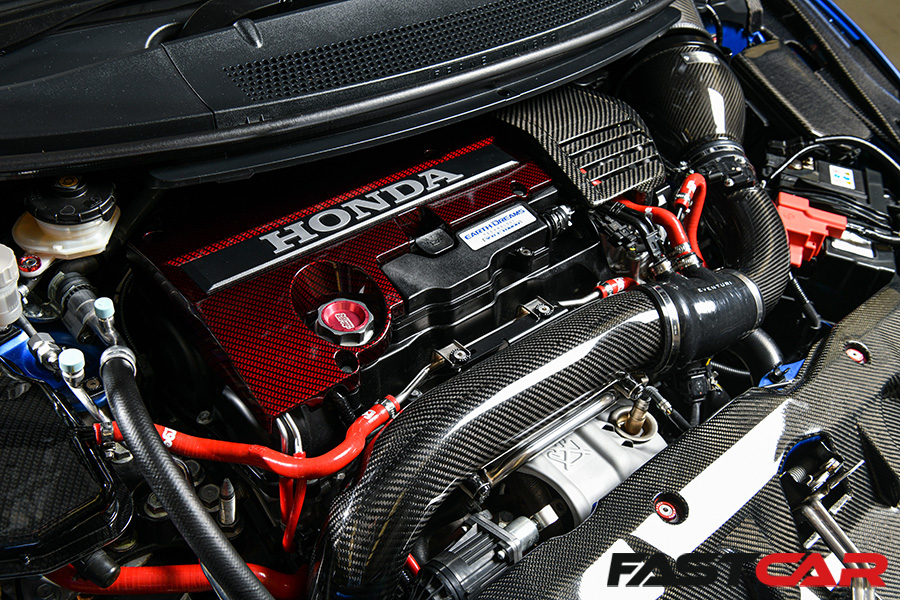
Honda Civic Type R FK2 engine tuning
The K20C engine was the first Civic Type R powerplant that came equipped with a metallic snail to force feed it with compressed air. This means a power output of 306bhp straight out of the box, leaving the factory output of every previous generation CTR well and truly in the dust, especially when it comes to low down torque. But this move to forced induction has done more than simply make for a faster machine than its forebears, as it’s also opened up a whole new arena of tuning potential, one that is much more potent than ever before with large gains possible from just a basic remap of an otherwise standard engine.
Some people may say that the FK2’s K20C has lost some of the Type R magic, as the VTEC crossover is much less noticeable than before, and lacks the Jeckyl and Hyde character that the hottest Civic was well known for. But this sacrifice has meant that gains are far easier to come by and the CTR is a fast car pretty much all the time, not just when you’re screaming the revs up to the redline.
Remapping
Unlike previous generations of Civic Type R with naturally aspirated engines, where you really needed to bolt on some freer flowing intake and exhaust mods before it was worth tinkering with the car’s ECU, with the turbocharged K20C in the FK2, you can see some really worthwhile gains with a simple remap. Companies such as TDi North offer remapping of the FK2’s ECU for around £400. As it’s a more advanced ECU that previous generations, it can simply be re-flashed, rather than requiring an additional ECU board to be fitted such as a Hondata KPro, so this is a really easy way to get an additional 40-50bhp and 40-50lb ft of torque without even getting your hands dirty! It works by instructing the ECU to run increased boost levels with a corresponding adjustment to fueling and timing.
Of course, if you want more than this level of performance, it will still be wise to fit your bolt on mods such as intake, intercooler and exhaust before you venture into ECU tuning, as you will only have to pay out for a second remap once the new hardware has been installed.
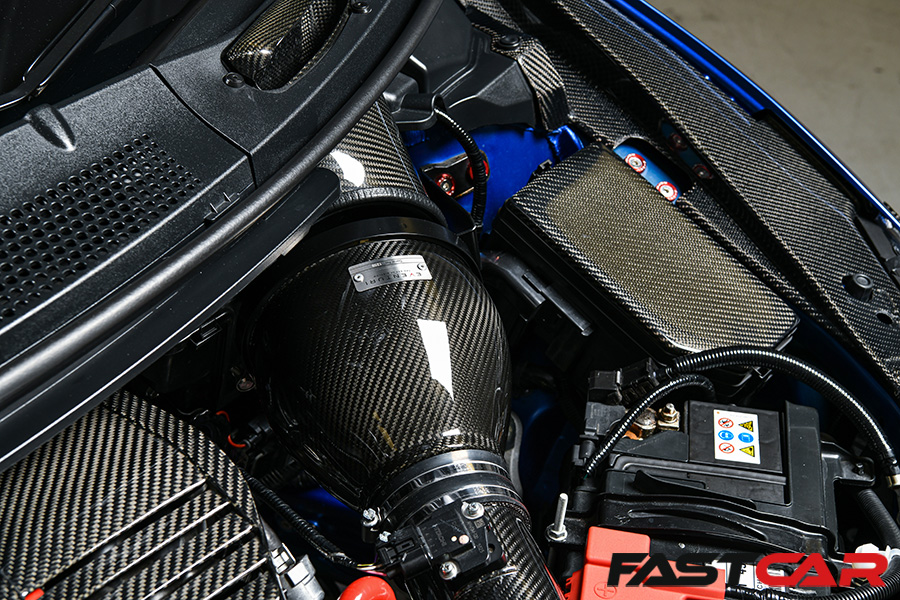
Honda Civic Type R FK2 intake tuning
As with any engine, more air in, equals more power out, so allowing the K20C’s turbo to suck in some additional fresh air will reap dividends. You can achieve this easily and cheaply by installing an uprated filter into the standard airbox. Companies like K&N offer a perfectly tailored filter with less air flow restriction that simply drops into the airbox with no cutting or additional parts required. These can be had for around £60 and can be fitted by anyone with even a modicum of spannering skill.
Taking things up a notch would be to replace the stock airbox with an induction kit. This offers optimum filter surface area and the least restricted pipework for maximum air flow, however, you still need to ensure that, whichever induction kit you use, it is of an enclosed type. Enclosed designs shield the filter from hot air in the engine bay that would otherwise reduce performance.
Basic enclosed induction kits such as those from Mishimoto cost around £350, while the £1150 Eventuri package is the crem de la crem of FK2 induction kits. This is a flow-tested carbon-fibre airbox which is fed by a skuttle-mounted scoop meaning not only is the filter shielded from the engine heat, it is receiving a constant stream of cold air from outside the engine bay. Tuners claim an increase of around 15-20bhp with the Eventuri kit alone, so while expensive, it does produce the goods. Check out some top air filter options, here.
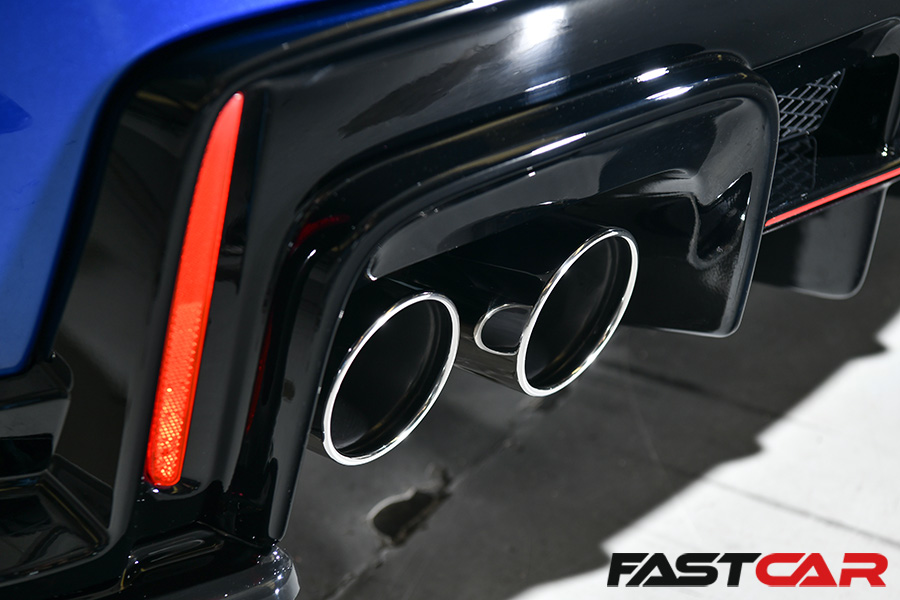
Honda Civic Type R FK2 Exhaust Tuning
Turbocharged cars love a free-flowing exhaust system and the FK2 is no different. With the intake sorted, now’s the time to look at opening up that restrictive standard exhaust system and we’ll start with the turbo downpipe.
This is one of the most restrictive parts of the standard exhaust system as it contains the catalytic converter, and by removing this completely, or replacing it with a freer flowing sports catalyst, you can unleash a fair few ponies, and pave the way for greater gains from the rest of your induction and exhaust mods too.
What options are out there?
Cobra Sport offer both 4in and 3in bore de-cat pipes and sports cats for the FK2, with the de-cat starting around £350 and the sports cat from £570. The de-cat version will ultimately be the options for the greatest power increase, but will not meet emissions levels to pass the MOT test, so will require you to refit the standard cat to get through the test each year.
After the downpipe has been sorted you can then look at replacing the rest of the exhaust system. For a budget friendly option, you can simply replace the standard centre section with a Tegiwa B-pipe for around £380, that will improve sound and flow but retain the OEM backbox.
But for those who want more noise, plus the enhanced look of an aftermarket backbox, we’d suggest a cat-back system. These are generally 3in bore systems that range from around £580 for a Japspeed item, to around £1500 for either a Cobra Sport, Milltek or Scorpion. And if you really want to push the boat out you can have either the £2500 Remus system or the £3000 Armytrix valvetronic system. But whichever cat-back you go for, you can expect to see gains of around 15bhp over the standard system, rising to nearer 30bhp with a full de-cat downpipe. For a closer look at some of the best aftermarket exhaust options available for all generations of the Civic, click here.
Further upgrades
More boost means that the standard intercooler can soon run out of flow or will not allow sufficient cooling, stemming the potential power increases in their tracks. To rectify this issue, we recommend an uprated intercooler. Dream Automotive offer uprated front mount intercoolers from £720. It is a direct fit for easer of installation and offers both improved flow and cooling from its tube and fin design.
While your addressing the FK2’s cooling, we’d also recommend upgrading the standard radiator to a more efficient aluminum item (from £250), as well as installing a low temperature thermostat (£130) which activates sooner to keep your engine cooler.
Finally on the cooling side, a £600 Hel oil cooler upgrade, based around a Setrab 19 row-core, is designed with ease of fitment in mind and will radically improve your FK2’s cooling especially when on track, as they can overheat when pushed hard on circuit.
With all the above inlet, exhaust and cooling upgrades fitted a suitable remap could see over 400bhp on the stock turbocharger, making a seriously potent machine indeed. If that sounds good, click this link for a round-up of some top aftermarket cooling upgrades.
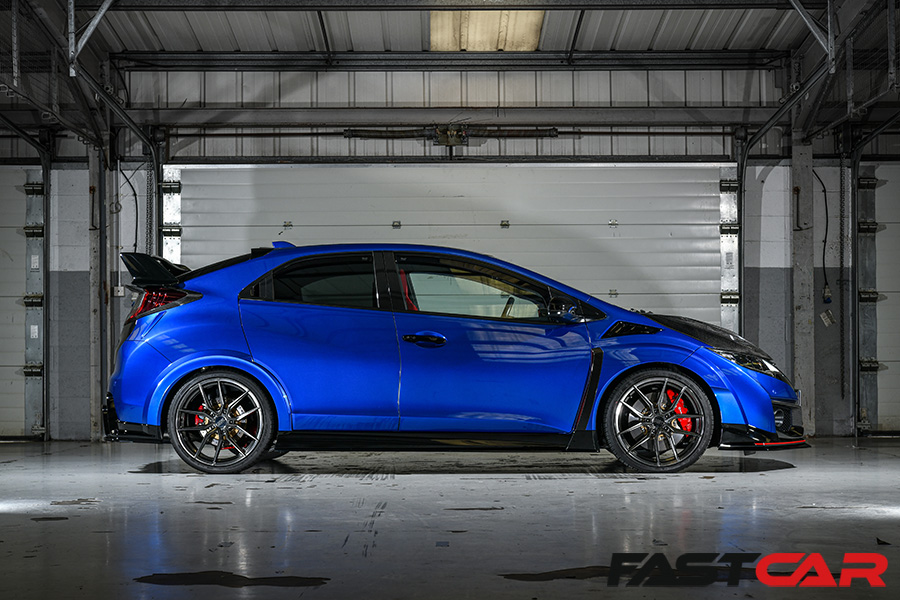
Honda Civic Type R FK2 transmission tuning
Clutch
Designed with the added grunt of a turbocharger in mind, the FK2’s clutch is a pretty robust unit and should hold up well up to power levels nearing 400bhp, however, much beyond this and you should budget for an upgrade.
For £550 CG Motorsport offer a six paddle clutch kit for the FK2 that can handle an additional 40% increase in torque over standard, while retaining the use of the OEM dual mass flywheel.
A beefier solution that also does away with the heavy stock flywheel is the £1400 Xtreme Clutch and flywheel kit. This features a lightweight alloy clutch cover and four paddle uprated clutch disc with a lightweight chromoly flywheel for improved torque capacity and throttle response.
Gearbox
The FK2’s six-speed gearbox is a strong unit without much in the way of modifications to upgrade it. However, if you really want a bulletproof solution and money is no object, then Quaife’s QKE10J six-speed sequential gearbox with straight cut gears will make your EP3 Civic Type R feel like a touring car when banging through the ratios. At almost £11k without an LSD, it’s far from cheap, but it is the ultimate cog swapper by far!
Differentials
Honda fitted the FK2 Type R with a limited slip differential from the factory that actually works extremely well, however, a more aggressive option will offer even more grip when accelerating or exiting a corner under power.
Options are available from Quaife, Kaaz and Cusco ranging in price from £800-£1500,however we’d go for the £1400 Wavetrac, as it is an auto torque biasing design with the patented Wavetrac system to ensure you don’t lose drive when one axle becomes unloaded.
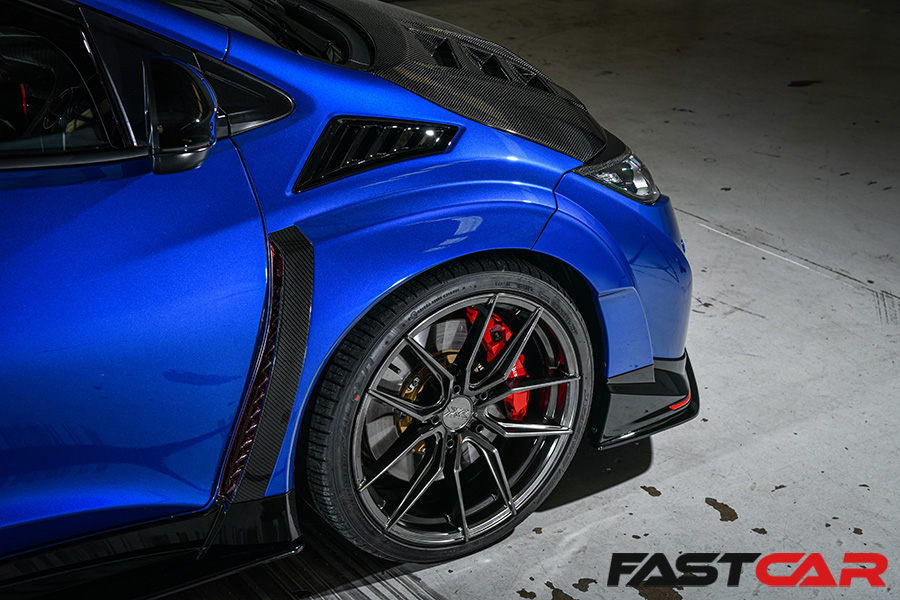
Honda Civic Type R FK2 suspension tuning
The FK2 has excellent suspension from factory with McPherson struts and trick anti-torque steer knuckles at the front and a beam setup at the rear. This produces an agile handling hatch that’s fun and playful.
Springs and dampers
The FK2 Civic Type R has some pretty trick suspension as standard. You can make the dampers firmer by pressing the R+ button on the dash, which is perfect for stiffening things up for a track day, but can prove too harsh on the road.
However, if you want those performance gains without giving yourself a back ache, there’s plenty of great aftermarket options out there. Even a good quality mid-range coilover, such as a set of KW Variant 3 costing £2250, will be able to offer a more compliant ride if it is set-up correctly.
Beware, however, that if you want to R+ button to work properly and retain its other features of sharpened throttle response etc, but without error messages on the dash, you will need to budget for an electronic damping cancellation kit. These are available from KW for around £300.
Though far from cheap, these upgrades will improve handling and ride quality no end, and be suitable for both road and circuit driving. Click here to check out some of the best aftermarket options in more detail.
Bushes
Most OEMs fit their cars with rubber bushes. These are cheap and vulnerable to wear, so replacing them with a firmer polyurethane upgrade makes a lot of sense. Not only do you get a genuine performance benefit of the stiffer bush and less unwanted flex in the suspension system, but they’ll never need replacing again in the future. The FK2 is getting on towards seven years old now, so the OEM bushes may still be OK, but it’s worth checking them just in case, especially if you are planning any other suspension upgrades.
A full bush kit from the likes of SuperPro or Polybush will cost around £380, but you can upgrade individual areas one at a time to ease the financial burden.
Anti-roll bars and braces
Anti-roll bars do exactly what they say on the tin – resist your car’s propensity to body roll. By fitting stiffer items you can increase their effect. For the FK2, its rear beam system means it only has an anti-roll bar at the front. Brands like Cusco or Whiteline produce uprated items for around £280, while you can add an additional rear ARB in the form of Hardrace’s 17mm kit for £225. Meanwhile there is a whole smorgasbord of braces available from Swave & Summit (from around £140) that will help stiffen the chassis to improve handling.
Geometry
All performance cars benefit from a proper alignment of their suspension geometry and the FK2 Civic Type R is no different. But don’t just add it on at your local tire fitters when you have your new tyres fitted, as their equipment is not really set up to get the best out of your modified ride. Your best bet is to go to a specialist who has the specialist equipment and knowledge to dial in custom camber, toe and caster settings to give you the handling you want from your car. If you want the ultimate setup, get them to corner weight the car with you sat in the driver’s seat too.
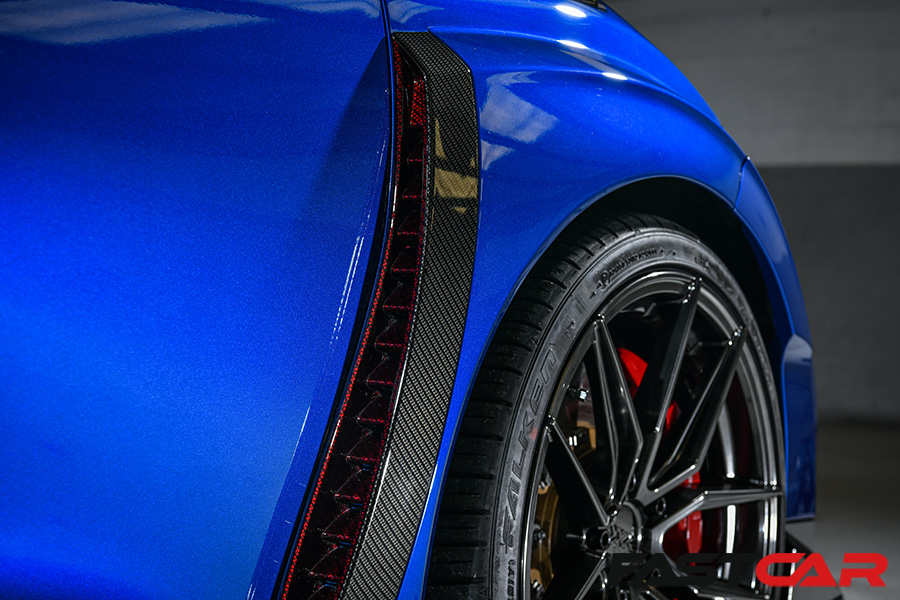
Honda Civic Type R FK2 brake tuning
The FK2 Type R comes with Brembo big brakes as standard so stopping power isn’t a massive problem unless you have considerably upped the power or are planning some serious track use (check out our guide to braking on track). The limitation of the stock setup is largely down to the brake pads, which have a relatively small surface area and can overheat under extended periods of hard use and begin to fade. A simple pad swap to some Pagid RS29 pads would sort this out straight away and allow you to stomp on the middle pedal with impunity. At £350 for a set, they aren’t cheap, but if they stop you taking an unplanned excursion into a hedge, they could be well worth it.
When it comes to discs, Tegiwa Imports offers a pair of genuine Honda floating items which are a nice upgrade over the stock discs and come complete with bells for just £400.
If this still doesn’t meet your stopping needs, you’ll be requiring a big brake kit. These replace the discs, pads and calipers with beefier items that can better withstand the hard abuse you might inflict on track. Starting at around £1950 for a TarOx kit with 315mm floating discs, anodised six pot calipers and uprated pads, they should offer serious stopping power.
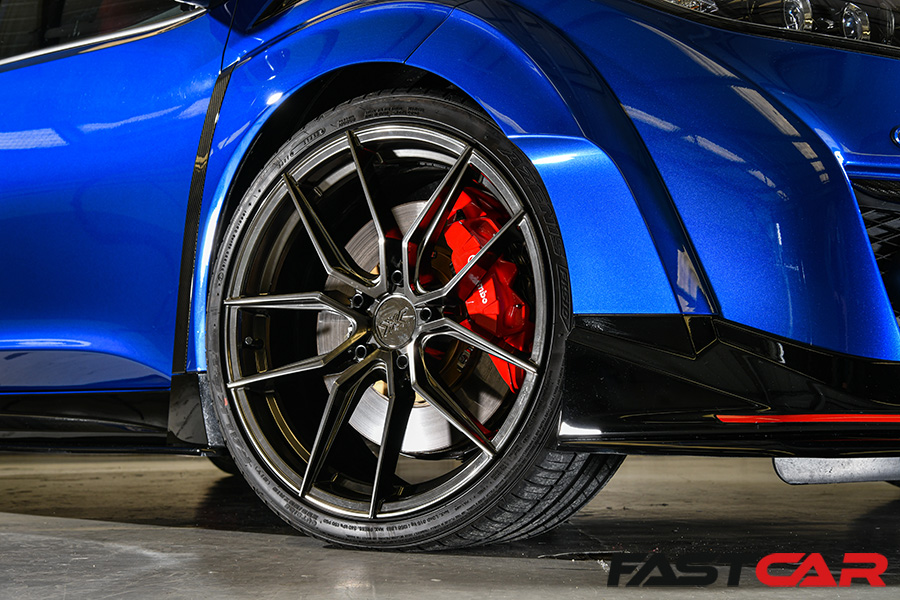
Honda Civic Type R FK2 performance wheels & tires
The FK2 comes with 19in wheels as standard, but the low profile tires add to the extra firm ride. Add in a high offset of ET60 which pushes the wheels well into the arches and you get a hell of a lot of arch gap which really doesn’t help the aesthetics. A simple set of Eibach 20mm spacers costing around £200 per side will help fill out the cavernous arches much better, but we’d recommend a swap to a small yet wider 18in wheel to get the best handling and looks from your FK2. The 18 will open up a larger choice of wider tires, which also utilize a taller profile side wall to increase grip and improve ride comfort.
Coming in a 5x120PCD, which is traditionally a BMW fitment, there are a lot of wheel options out there that will look great on the FK2, but we like either the Enkei GT02 in 8.5×18 ET45 (£430 each) or the PF09s in a girthy 8.5×18 ET35 (£530 each).
Both of these wheels suit the look of the FK2 while shaving weight in the most important place; heavy wheels will dampen all the good work you have done with your suspension upgrades and dull acceleration.
Check out our best Honda Civic Type R wheels guide for some FK2 wheel inspiration.
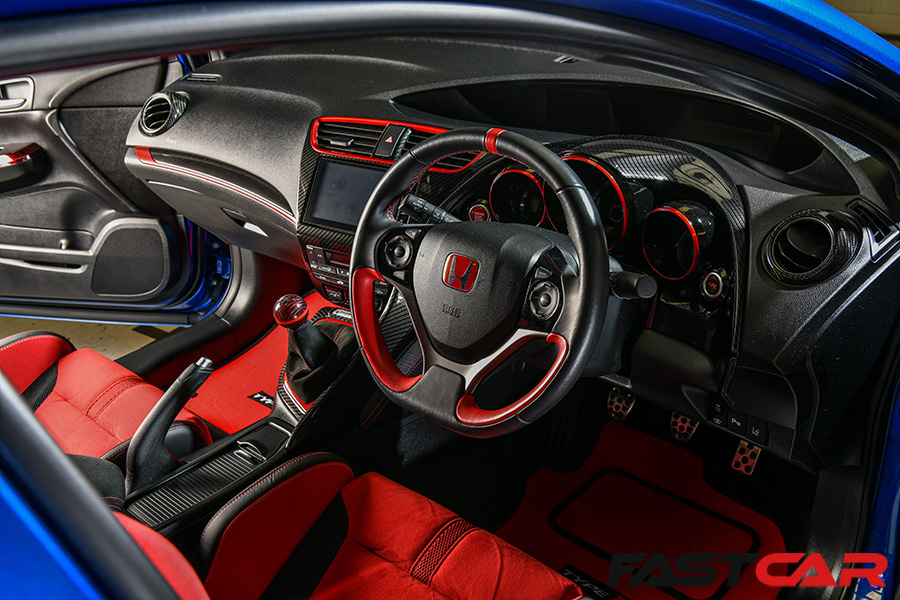
Honda Civic Type R FK2 interior upgrades
The FK2 has some of the best standard seats of any Type R, so unless you are going for the ultimate in light weight with a stripped interior and carbon bucket seats, we’d leave them well alone. They have harness slots in the headrests as standard so if you are planning on tracking your FK2 a harness bar and pair of Takata or Scroth harnesses would be a perfect fit. Other than that, we’d probably leave it well alone, but then you could always add in some better quality audio as Honda’s standard fit speakers are never that great, so a new set of aftermarket ones and a small subwoofer would make a huge difference to the sound.
Honda Civic Type R FK2 styling upgrades
The FK2, like the FN2 before it, is a bit marmite in the looks department. The sharp angles and high level spoiler can be a bit over the top for some, but we love it! There’s not a whole of options for radically changing the FK2’s style, but there is a plethora of carbon parts from bonnets, to boot lids, doors, wings and roof skins to shave weight and add a huge chunk of race car chic. Carbon bonnets start at around £800 with vented front arches coming in at £2800 for a pair.
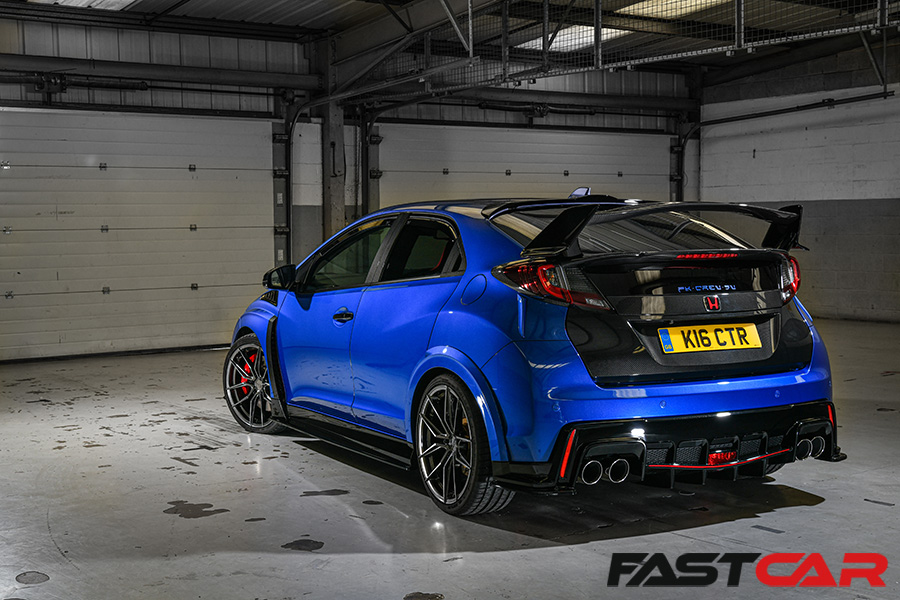
Words: Dan Sherwood.

